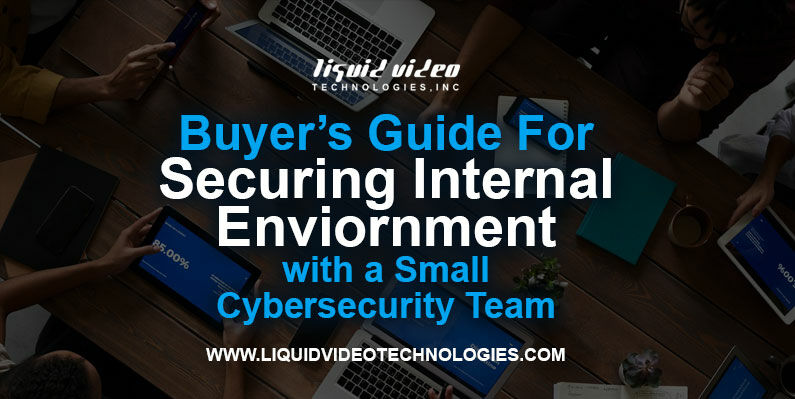Ensuring the cybersecurity of your internal environment when you have a small security team is challenging. If you want to maintain the highest security level with a small team, your strategy has to be ‘do more with less,’ and with the right technology, you can leverage your team and protect your internal environment from breaches.
The “buyer’s guide for securing the internal environment with a small cybersecurity team,” includes a checklist of the most important things to consider when creating or re-evaluating the cybersecurity of your internal environment to ensure your team has it all covered.
The buyer’s guide is designed to help you choose the solution that will ensure you get complete visibility, accurately detect and mitigate threats, and make the most of your existing resources and skills. There are three key aspects that stand out when looking for the best way to protect your internal environment with a small team—visibility, automation, and ease of use.
Cybersecurity Tip 1:
If you can’t see it, you can’t keep it secure
With the attack surface continually growing and your endpoints and employees being spread across multiple locations, visibility of your entire internal environment is critical for its protection and cybersecurity. How do you ensure visibility?
1. Asset discovery – make sure you know about all your endpoints so that you can keep them monitored and updated.
2. Advanced endpoint security – ‘understand’ the endpoint’s behavior in order to detect anomalies and stealthy attacks.
3. Natively integrated advanced technologies including NGAV, EDR, NTA/NDR, UEBA, and Deception Technology, to ensure coverage and timely detection.
Cybersecurity Tip 2:
Your success lies with automation
A small team can only get as much done. Automation can free up a lot of your team’s time and resources, and it will probably help with a lot of your regulatory requirements.
Automation touches every aspect of the cybersecurity solution – from the asset discovery to the accurate detection, from investigation workflows to prioritization of risk, from response planning to execute remediation.
A solution that provides automated investigation workflows of all detected threats will substantially cut the time from alert to respond and ensure all threats are investigated and prioritized.
Cybersecurity Tip 3:
Keep it simple, or no one will use it
Don’t mistake this title with a solution being user-friendly. Sure, it’s part of it, but far from what the term actually encompasses.
- Deployment – there are several factors to consider before deploying a solution. Look for a fast-to-deploy solution, doesn’t interfere with operations and requires minimal effort and resources from your organization.
- Consolidation – a single solution that replaces or combines multiple security tools in a unified platform is a huge advantage for operations and management. In addition, it will usually reduce costs and improve time-to-remediation.
- Integration – for a solution to be effective and used, it has to integrate with other existing solutions easily. This will also enhance your resilience and leverage the ROI of your cybersecurity environment.
A small security team still has to address major cybersecurity challenges, just like a big team does. Small teams have to be more creative, more efficient, and more adaptive as they are constantly required to do more with less.
Article Provided By: Hacker News
![]()
If you would like liquidvideotechnologies.com to discuss developing your Home Security System, Networking, Access Control, Fire, IT consultant or PCI Compliance, please do not hesitate to call us at 864-859-9848 or you can email us at deveren@liquidvideotechnologies.com.


Recent Comments